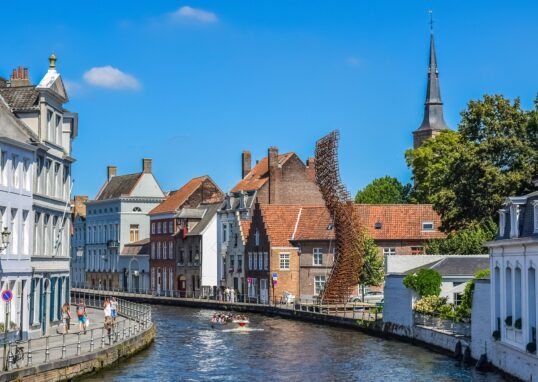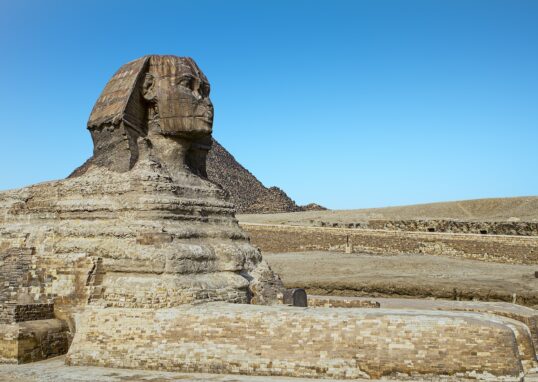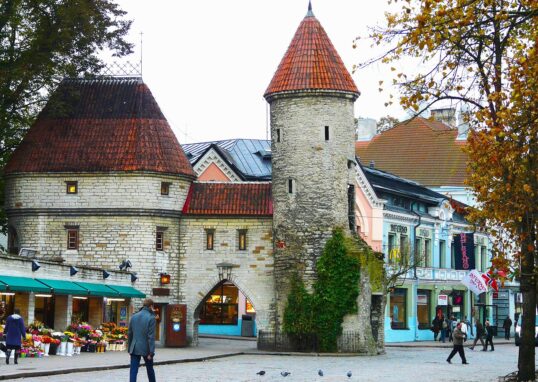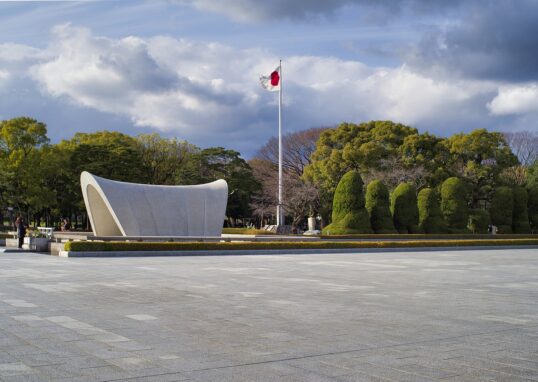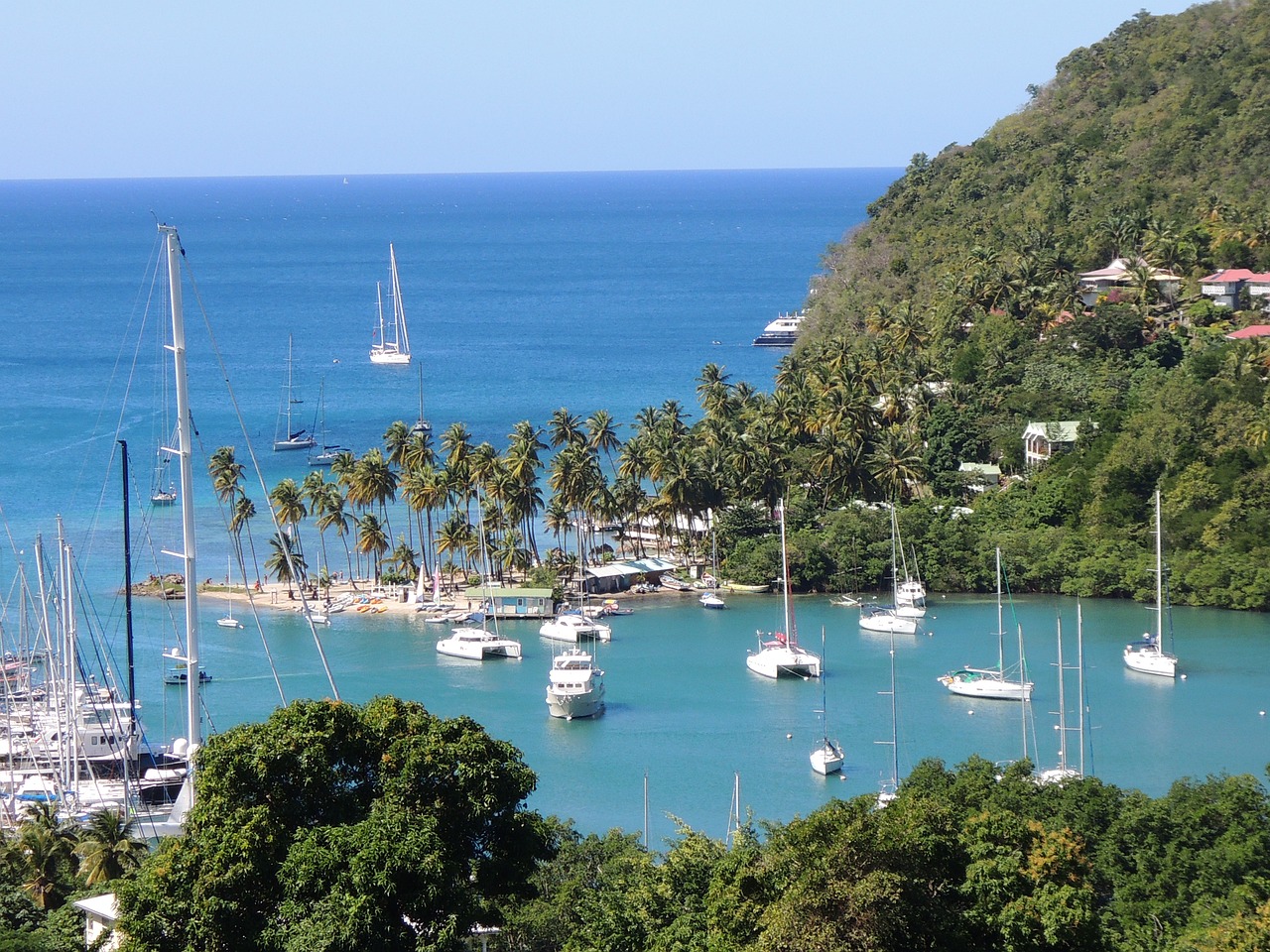
The First Time You See Them, You Forget Your Name: The Pitons’ Hypnotic Spell
St. Lucia’s Pitons are the major landmarks of the Caribbean, known worldwide, and are situated on the island’s southwestern coast. They are two volcanic spires named Gros Piton and Petit Piton. Needless to say, these superb pillars extending out of the sea are not only picturesque but also a UNESCO World Heritage site, declared in 2004 as the Pitons Management Area (PMA) due to its unique geological features, biodiversity, and cultural significance. These spires are the remnants of volcanic activity and are home to a diverse array of flora and fauna. They are also a popular destination frequented by thrill-seekers, as well as outdoor enthusiasts and eco-tourists.
Gros Piton, the higher of the pair at 798 meters, is a popular hike. Its trail is challenging but well worth the effort, offering views of the island, the Caribbean Sea, and the neighboring Petit Piton. Guided tours are highly recommended, as local guides can offer valuable insights into the area’s flora, fauna, and geological history. The walk is approximately 3-4 hours return, offering a rich rainforest experience, volcanic rock formations, and the possibility of wildlife sightings.

Geological Significance of the Pitons
The Pitons, which were most likely created by a volcano approximately 300,000 to 200,000 years ago, are composed of Gros Piton, at 798 meters (2,618 feet), and Petit Piton, a smaller and steeper peak, at 743 meters (2,438 feet). They are formed from lava rocks that were molded by previous volcanic eruptions. It is only a small unit of the Soufriere Volcanic Centre, which is located near a new, still-active volcano, but the other two are inactive.
This unique geology of the Pitons area makes a charming visual landscape and generates a dynamic environmental variation. The surroundings are characterized by tropical rainforests, coral reefs, and hot springs, which create an ecosystem that supports the vast diversity of plant and animal life. The vertical face of the Pitons is one of the many factors that combine to make this area one of the most striking landscapes in the region due to its proximity to the Caribbean Sea.
Hiking the Pitons
One of the attractions for visitors to the Pitons is the opportunity to climb one or both peaks. The two hikes, common to both, involve a long and arduous journey up the mountains, yet they are also quite different in other aspects, such as approach, level of hardship, and what they have to offer.
Gros Piton Hike
The journey is challenging but manageable for those in good physical shape. The path leading to Gros Piton is well-marked and well-maintained, and local guides are available to assist hikers. The route bangs out from the village of Fond Gens Libre, a French name meaning “Village of the Free People” – a name that reflects the area’s history as a refuge for escaped slaves known as Maroons.
The ascent of Gros Piton is approximately 4 – 5 hours round trip, depending on your pace and the number of stops you make along the way. The hike is approximately 5 kilometers (3 miles) long, and although it is steep in some places, it is not technically challenging. Apart from the trail, trekkers also stand in the wilderness to appreciate the breathtaking view of the surrounding jungle and sea. The summit, however, will completely change your perspective as it offers a 360-degree view of the entire island and the blue waters beyond.
Petit Piton Hike
The Petit Piton is slightly smaller than the Gros Piton mountain, but it is much steeper in contrast and is among the most challenging trails in the Caribbean. The Petit Piton hike has no formal regulations, unlike those of Gros Piton, and it is therefore advised that only highly skilled climbers attempt it, as well as those who are comfortable with rock scrambling and facing steep, exposed slopes. From Petit Piton, you will not find the same kind of clear trails as those on Gros Piton; instead, the path is more vertical and thus more intense and demanding in terms of physical exertion.
The Pitons Management Area (PMA) isn’t just the eponymous twin volcanic peaks; it is a forest, a coral reef, and a geothermal region in its own right. This, therefore, makes it a unique ecological region in the world. The PMA is situated on both land and sea, spanning an area of 7,190 acres (2,909 hectares) and extending from the mountain tops of the Pitons to the underwater landscape surrounding them. This varied landscape provides a home to various ecosystems, from tropical forests to mangroves and marine habitats.
Flora
The rainforest surrounding the Pitons comprises many endemic species of tropical plants, many of which are found nowhere else on Earth. The slopes of Gros Piton below are occupied by a dense forest of thick tropical growth of ferns, orchids, and other tall trees that provide a refuge for wildlife. As you climb up the mountain, the vegetation is becoming more and more scarce, but you can still find peculiar plants that have adapted to the harsh conditions of the hill.
Additionally, the PMA is home to several original plants used in medical treatment. It is dubbed a place for botanists and nature lovers to appreciate, who are lucky enough to witness the variety in the island’s natural flora.
Fauna
The Pitons eucalyptus is a haven for wildlife, with an abundance of bird, mammal, reptile, and amphibian species flourishing in the environment. The rainforest is also home to the St. Lucia whiptail lizard, as well as various species of frogs, bats, and insects.
The marine fauna at both of the Pitons is also really spectacular. The coral reefs on the Piton coast are pretty popular with schools of fish, turtles, and diverse coral formations. The Pitons’ coast offers scuba diving and snorkeling, allowing one to explore the underwater marine world. One can also see the colorful marine life spreading throughout the shallow Caribbean Sea around the Pitons.
Cultural Significance of the Pitons
People on the island of St. Lucia attach great importance to the Pitons, which have a profound significance in their cultural heritage. They are, in fact, not just a symbol of national pride but the very embodiment of the island’s enduring strength, charm, and resilience. From the Birth of the Pitons, the poet of the Pitons has been associated with the short life of the maroons, who once used the Pitons mountains as a hideout, especially after colonizers arrived. The community of Fond Gens Libre, nestled at the foot of Gros Piton, was established by fugitives escaping slavery who sought refuge in the remote and rugged area of the Pitons. It is a symbol of the area.
The Pitons are elements of cultural heritage that are especially celebrated at local festivals, through music, and in the arts. They are the most common themes in various art forms, serving as a source of ideas for local artists. Moreover, they are closely tied to St. Lucian oral literature, folktales, and mythology, with numerous tales from mythical or spiritual perspectives having been passed down from one generation to the next, from the time when the island was uninhabited to the present, focusing on the efficacy of these fabulous natural havens.
There are many opportunities for those who enjoy praising Piton from afar. The Tate Paul Nature Trail, a relatively easy hike, offers fantastic views of both peaks and the surrounding landscape. The nearby Chinese beach between Pitone is an ideal place to relax, swim, snorkel, and enjoy the old white sand. The coral reefs are alive with marine life, making it a paradise for underwater enthusiasts.
Piton is also an attraction of St. Lucia’s luxurious tourism. Z Mountain Resort and Sugar Beach offer world-class homes with fantastic views of the Viceroy Resort Peaks. These resorts offer a perfect blend of relaxation and adventure, featuring activities such as yoga, spa treatments, and boat tours.
The area around Piton is rich in cultural and natural attractions. Sulphur Springs Park, known as “the world’s only driveway volcano,” has mud baths and hot springs that are considered therapeutic. Diamond Falls Botanical Garden and Torill Falls are other attractions that showcase the juicy tropical beauty of St. Lucia.
Sustainability and Conservation Efforts
Indeed, conservation efforts are a top priority for the St. Lucian government and local communities because the Pitons are a UNESCO World Heritage Site. The Pitons Management Area is being closely monitored to ensure the ecosystems remain safe from the pressures of tourism and development. Although the region aims to provide tourists with an excellent experience, it also seeks to prevent visitors from harming the environment. Consequently, several measures have been implemented to allow tourists to enjoy the region with minimal impact.
Local guides and tour operators who are trained in eco-friendly methods are among the most effective in achieving the goal. In contrast, hikers are instructed to show respect for the existing order of the natural world by traveling only on designated paths, which are specifically created to minimize their impact on wildlife. The coastal zone surrounding the Pitons is also under federal government oversight to manage the problem of overfishing and coral reef destruction. Another island is Aruba, a small island in the Caribbean known for its incredible, otherworldly beaches.
Conclusion
The powdery-white sand, crystal-clear waters with turquoise color, and good weather conditions in any season, all these beautiful beaches of Aruba attract tourists from different countries. The island’s shores are renowned for their diverse range of activities, from relaxing in a tranquil setting to snorkeling and engaging in extreme water sports. The Pitons of St. Lucia are known as a geological marvel created by nature. Whether you enjoy the panoramic view from the summit of Gros Piton, dive into the coral reef below, or visit the nearby town of Soufrière, the Pitons deliver an incredible experience to visitors. One of the most recognizable landmarks of the Caribbean, the Pitons not only live up to their potential but also remain an obsession for tourists and locals alike. Because of their imposing heights, long history, and ecological value, it is impossible to walk past their scenic marvels while touring St. Lucia.





